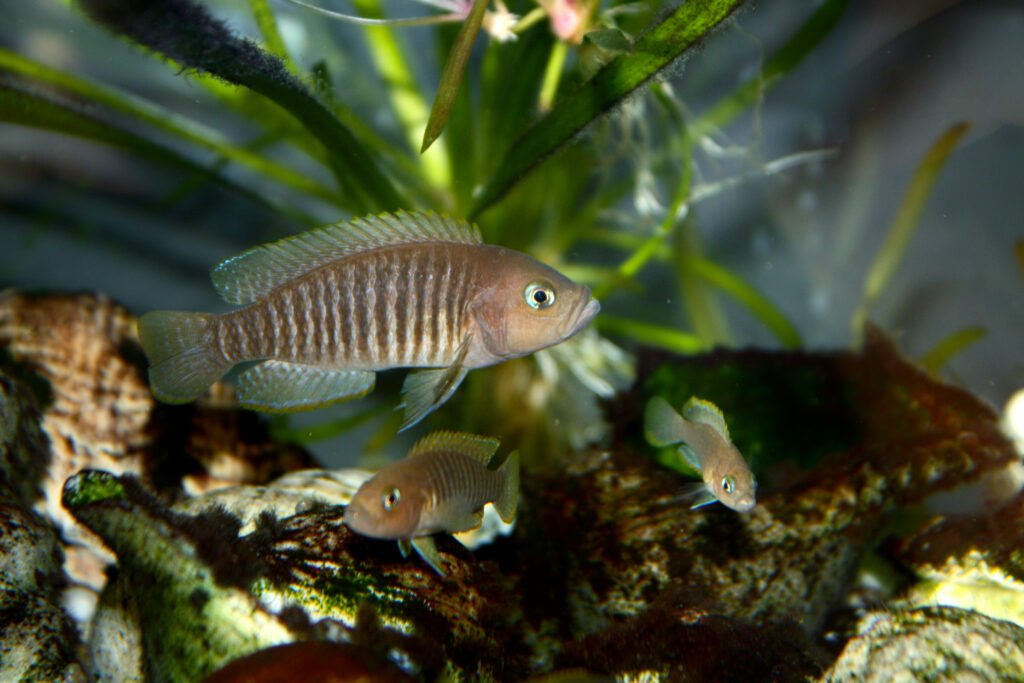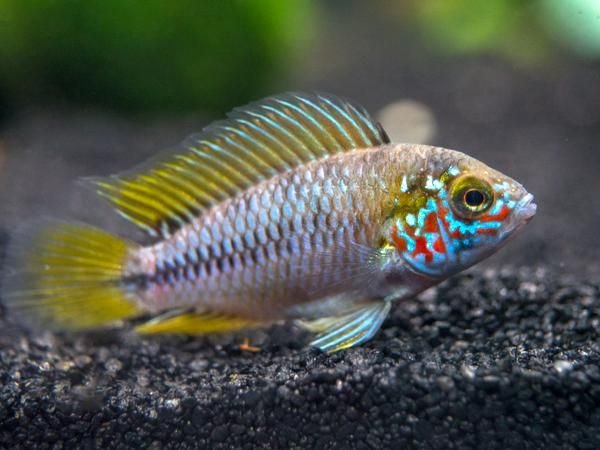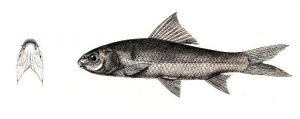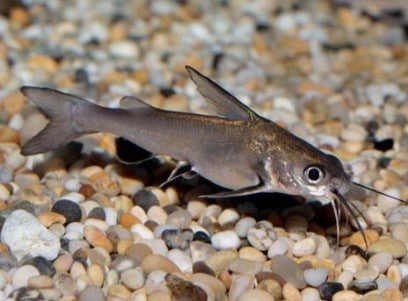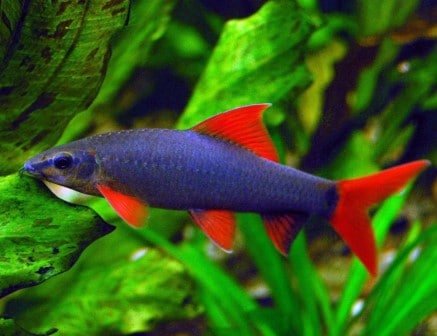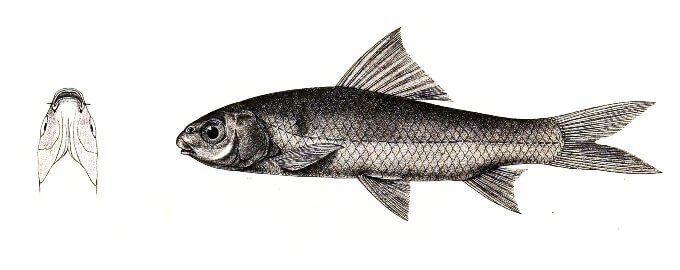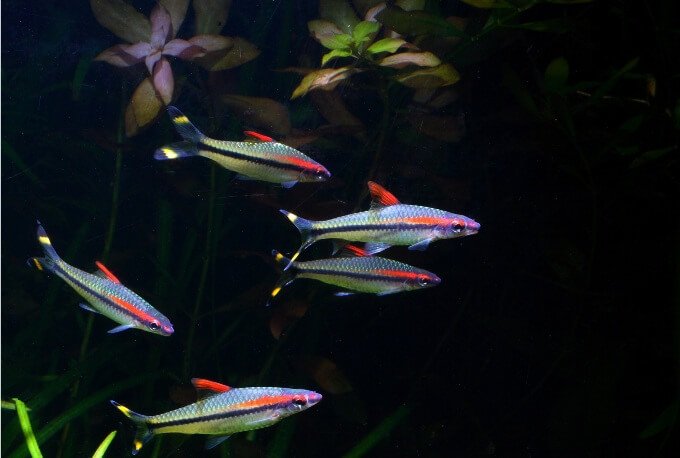The Ember Tetra, often called the Fire Tetra, captivates with its bright orange scales, bringing life to the aquarium. Known for their playful nature and sociable behavior, they make excellent tank mates for a variety of tropical fish.
Join us in our comprehensive guide covering all aspects of caring for these delightful and peaceful aquarium fish.
About Ember Tetras
The Ember Tetra (Hyphessobryconamandae) is a tiny Orange tetra of South America. They are in the Characid family, one of the most diverse fish families in the world.
These fish can be found around the Araguaia River basin in Brazil. They are unusually hardy for their size, and they are not especially susceptible to popular fish diseases.
It would be best if you kept Ember in shoals of at least eight individuals. If you love community nano tanks, then you’ll love these tetras.
Name
Hyphessobryconsamandae is popularly known as the Ember Tetra. This species was recently found in 1987 and given Amanda Bleher, who was the mother of Heiko Bleher, the one who found the fish.
What does Ember Tetras look like?
Ember Tetras have a red or orange tone similar in appearance to fire’s dying embers. They have elongated bodies, one anal fin which is merged, two small dorsal fins in one.
The body almost always has a bright orange color, with the lower body slightly lighter than the top. The females usually have larger air bladders than the males, but their bodies tend to be smooth during breeding time.
If we want our Tetras to turn a deep red color, we would have to take special care of their diet, give them live feed, and take extra care of water pH levels and soil conditions.
Appearance
The Ember Tetra is almost entirely Orangeish-red, and its color brightness is present wherever on its body. Their distal fins are thick and tall, with a gradient that fades from their primary color to an even shader backward and back.
Their caudal fins with forks have more drastic color transitions than their dorsal fins. The tetras’ bodies have a classic shape seen in most tetras.
The nutritional levels of the diet will impact how vivid their color is. A dull Ember Tetra usually suggests it’s not taken care of properly at some point. The fish are adorable and bright color creatures.
Size
An average Ember Tetra size is around 1 inch long. It is somewhat smaller than some other tetras, as neons. Some people think these creatures are identical, just differently colored just as much.
The size of these fish is usually not impacted by the high quality of their care. There are cases when a fish grows longer than an inch, but it’s very uncommon.
Identification
Ember Tetra is named for its warm orange body that glows almost like a glow in an aquarium. Males usually show darker to brighter coloration, especially during spawning season. The Ember Tetra can not be confused with the glowlight tetra (Hemigrammuserythrozonus).
Ember Tetra: a species profile
The Ember Tetra (Hyphessobrycon Amanda) originated from Brazil’s Araguaia basin and was discovered in 1987. Growing to a maximum of 0.8 inches (2 cm), This fish is a popular choice of home aquariums because of its small size, attractive colors, and easy maintenance. Today’s article talks about embers tetra and describes why they are a popular aquarium choice. And we also talk about easy-to-care fish status and why we consider them the popular alternative to make our aquarium.
Summary of species
Fire Tetras (Hyphessobryconamandae) can be found most strongly in south eastern Brazil in the Araguaia River basin. They prefer the waters of rivers that have small currents and an immense concentration of vegetation. In the wild, this fish eats plant compounds and tiny invertebrates. They are surprisingly calm and can be compatible with a wide variety of tankmates. The primary color of the Ember Tetra is the vivid orange hue. This makes them stand out in most freshwater nano aquariums and means that this fish is likely a popular choice for years to come. This fish might most likely be popular in the Freshwater nano aquariums.
Is the Ember Tetra suitable for your aquarium?
The Ember Tetra’s a stunning fish that fills any aquarium. His temperament makes this a superb choice for anyone who has a community tank. These beautiful fish seem so friendly to have and look great in groups. This article will help you discover everything you can about this fun tiny fish. It’s also an excellent way to get creative with the tank set up with the tropical fish in your tank.
Are Ember Tetras Suitable for Aquarium?
Ember Tetra is one of the most typical tropical fishes in tropical freshwater aquariums. Bright colors and unusual appearance have been popular for the community tanks. The only thing to bear in mind is their size and responsiveness to water parameters. Its peaceful nature allows the fish to fit easily into almost any aquarium. It’s also a perfect opportunity for testing a Nano setup in a 10-gallon tank.
Maintenance
Floating plant species and driftwood branches, and dried leaf litter are valuable additions to the tank. Microorganisms find in those decorations may contribute useful secondary food sources to fry. Filtration has to be correctly sized and with moderate water flow. The tannins and other chemicals released by the dead leaves may be beneficial.
Natural habitat
The Ember Tetra is common in slow-moving rivers in the western parts of Brazil. In the aquarium, to mimic their natural habitat, it is commonly recommended to keep them to a slightly acidic water level with a pH of around 5.8 to 7. They live in hot regions. The ideal temperatures would be between 75 and 82 F or between 24-28 degrees Celsius.
Distribution
Das Mortes river is a large tributary of the Araguaia, the primary outlet of the Rio Tocantins within the lower Amazon. The full range of H. amandae in the system remains elusive.
Wild habitat and tank conditions
These fish come from the waters of the South American rivers. Underwater vegetation can be found in abundance in the river and provide the fish with protection.
Most of the time, Ember Tetras remain in the low flow zones of the river basin. They usually come out just after sunrise and just after sunset and stay in the central areas of the water columns. These rivers have a muddy substrate with many dead leaves and driftwood.
How do I care for Ember Tetras?
Ember Tetra is a small freshwater fish which are prone to no specific illnesses. Overfeeding sometimes can be a problem. It could cause numerous diseases in their digestive system.
Keeping up with water changes and checking the parameters is fundamental for health, as is consistently conserving the water tank quality.
Ember Tetra Care
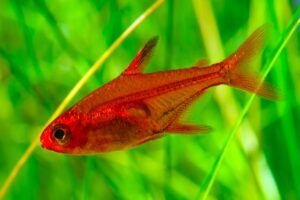
Ember Tetra fish are perfect for keeping and recommended to aquarists of any professional level. As long as you take care of the basics with their habitats and the water quality, there’s nothing you have to worry about.
This is why we recommend them for anyone seeking some vibrant color for their tank. These tiny fish are quick and easy to keep.
Ember Tetra Care Guide
Ember Tetras are one of the easiest fish for beginners to keep. The species is quite strong and healthy for its size. Make a good maintenance schedule and keep your water supply constant.
The fish is not particularly prone to disease only picks up parasites that cause discomfort in the fish tank after its treatment. If the fish looks very dull or consists of mixed vivid and soft colors, this indicator may mean it is unhappy with its tank conditions.
Unfortunately, they don’t live long. You can expect them to stay alive for two or four years (even under the most effective care).
How long do Ember Tetras live?
Average tetra survives between one and four years. You can prolong their life span by up to a year if you properly care for your fish.
Tetras living in large tanks tend to live longer than those living in scarce tanks. If you can keep your tetras happy, they may live up to six years if even more attention is paid to their habitats. Assure that you put lots of live plants inside the tank, maintain your water well clean and feed them the proper amounts of live food.
What do Ember Tetras eat?
Ember Tetras are micro predators and need a regular food supply of animal-origin food. They have tiny mouths and are not interested in seeking food that splatters in their bottoms.
Feeding the tetras may take the most challenging part of keeping them, and you need to make the most effective care they can handle.
Try to keep their diet as diverse as possible, so your Tetras will be happy and healthy. Possibly you’ll want to look for feeding worms, baby brine shrimps, Baby daphnia, grindal worms, or whatever.
In addition to offering a quality commercial feed. Make sure you provide a little bit of everything for your fish; variety is the way to go.
Ember tetra diet
Ember Tetras will accept fish flakes easily; however, other well-balanced and nutritious foods should serve as a foundation for their diet.
Frozen, fresh, dried, and live foods should be supplied often to maintain your tetra shining brightly. It is essential to remember that these fish are tiny and are probably more challenging to eat.
If necessary, it’s recommendable to break up tiny pieces, so it gets easier for them to eat. Ember Tetra is a hardy fish and eats practically anything they get.
How big do Ember Tetras get?
Amber tetras are relatively tiny at a maximum length of 1 inch. Due to their small size, you can place a considerable number of these in minor fish tanks.
Ember tetra tank requirements
The recommended tank size for a school of Ember Tetras is 10 gallons (38 L). It aims to replicate their natural habitat. An Indian almond leaf is used to darken the water because tannins are released from the leaves. These fish perform best in lower water flow.
They can’t quickly go around when idle in the water column. It is also worth considering how tiny these fish is and that the water pump can soon suck them up if they have no protective barrier.
Tank Setup
The fish originates from small rivers where the flow slows. It can be very beneficial to make use of a powerhead or for filtration. Because they prefer slightly acid waters, the fish usually has a pH range between 5.8-6.8. Some driftwood or leaves will help decrease the pH. It should be at least 10-gallon tanks capable of storing 5-8 fish.
Decor
In addition to providing shelter and a microenvironment that generates food, living plants help in gas exchange and nutrient cycling in the aquarium. Due to the skittish nature of these tetras, they often weave through hiding areas during the day for safety.
Ember Tetra Tank Mates
Because of this gentle nature, several viable tankmates are available for the Ember Tetra that are worth keeping. Cory catfish, rasboras, Neon Tetra, and pygmy catfish are all commonly paired.
Essential, all kinds of nonaggressive fish will fit it! If you follow the recommended guidelines of temperament and size, there’s an unlimited supply of choices available. We even have critters like snails and shrimps for tanks with Ember Tetra.
We don’t recommend tankmates large enough to eat the Ember Tetra because the tankmate might accidentally confuse them with a snack.
Tank Mates for Ember Tetras

Ember Tetras can survive peacefully with almost any other sort of tetra. Neon Tetras also make good tankmates, as do Pygmy Rasbora. Small Corydoras Catfish are also an excellent addition to our Ember communities.
Cichlids Oscars or even more peaceful Freshwater Angel Fish would make tetra tanks a nightmare. Long-tailed fish (like the Gouramis) can also be avoided. Barbs such as Tiger barb may be too much for this fish to manage.
Ember Tetra behavior
The Ember Tetra is a school fish that thrives when kept in when held in many individuals. They move in clusters and wade in the middle and upper parts of the aquarium.
Behavior
These Ember Tetras are skittish because of their small size and fragile demeanor. It is usual for them to desire safety from predators. These tetras should be kept in a shoal of at least 5-8 fish. They’re also easily stressed and should be maintained with fish of the same size and distribution.
They look magnificent in a community tank as they appear dazzling as groups with another fish in the aquarium. This species thrives in planted tanks and thrives in any tank given their hiding zones adequate to withstand water. Several times these tetras are observed to weave through plants and decorative items during the day.
Breeding Ember Tetra
Ember Tetras are free spawning fish which means parents don’t care for the fry. Under well-monitored conditions, spawning is frequently performed and does not require additional assistance.
To stimulate spawning, try changing pH near neutral and making water temperature around 80-82°F. If the parents are eating the fries, they should be placed in separate tanks.
It is recommended to optimize the acclimatization procedure for all fish, including the parents. Illumination ought to be dimmed.
Breeding & Reproduction
Ember Tetras are one of the easiest species for breeding. You can just put both males and females together in a tank to help to spawn.
When a Tetra spawns, you will see behavior changes. The male will chase the pregnant female around the tank and become aggressive. You may need to install small breeding tanks with low light and filters.
Ideally, it’s imperative to keep the water filtered for the proper breeding and birth of eggs healthily. Once tetras begin to lay eggs, it leaves them, leaving them to fend for themselves. Once they reach a medium size, you can bring them into a regular fish tank.
Reproduction
Amandais eggs spread-free spawn animal showing no parental care. Young adults can spawn often; in mature aquariums, small numbers of small fry can appear without intervention.
If you desire to maximize yield, this means that you’d need a much more controlled approach. Adult groups can still be conditioned together, but a smaller aquarium should also be set up and have a mature filter system.
The water itself should have a slightly acidic to neutral pH with a temperature towards the upper end of the range suggested above. The sponge-filter or air-stone s could also add oxygen and fluid filtration.
Sexual dimorphism
Adult males are more intensely colored, especially at the breeding stage, while females are noticeably more round-shaped.
Caring for Ember Tetra Fry
You must watch the breeding parent several weeks before she spawns, or it could end up eating the fry. Please take care to feed pregnant mothers live feed at least two weeks to trigger the spawn.
Ember Tetra Facts & Overview
This Ember Tetra is a small freshwater tropical fish of the Characidae family. These fish are very popular with fish keepers because of their beautiful appearance and not demanding fish.
Their bright, fiery appearance makes them relatively easy for us to keep in our tanks. They are active but peaceful fish; great choices for anybody with any level of experience in fishkeeping.
Feeding and general husbandry
Tetra embers are voracious eaters in the wild. Almost all their food in their natural habitat consists of worms, invertebrates, and phytoplankton.
They can happily feed on almost everything from an aquarium. It’s recommended that you vary their diet with some form of wet food like live or frozen daphnia or tubifex worms.
This is important because too many processed foods such as flakes and pellets cause digestive issues. Because of its small size, this species is a susceptible fish. It is best only to introduce them when the tank is completely cycled.
Final Thoughts – Ember Tetra
Combining their beauty and ease of maintenance make them ideal for aquarium keepers of any experience level. The lightning colors and splashing in the waters are worth it.
Whether you are just starting to fish or want a nice and low-maintenance fish, the Ember Tetra can be an excellent choice. We’ve already recommended them to friends for years, but now we’ll let you know how good they are!



![[Care Tips] The 20 Best Algae Eaters For Your Freshwater Tank Best Algae Eaters For Your Tank](https://aquariumhunter.com/wp-content/uploads/2021/09/whiptail-catfish.jpg)

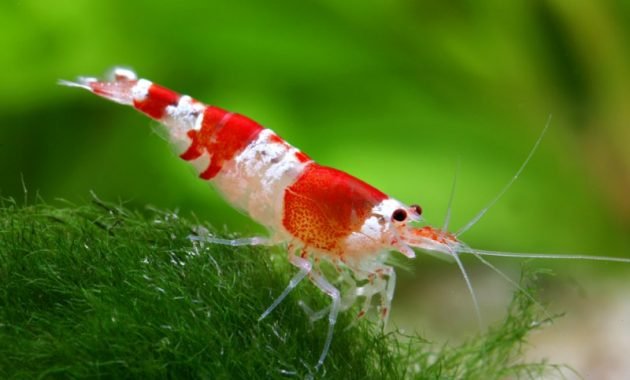

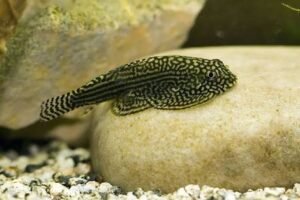

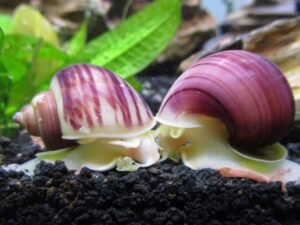









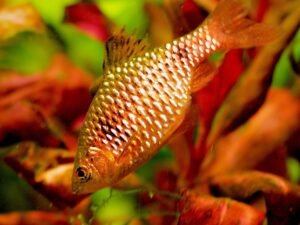

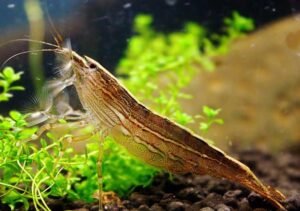

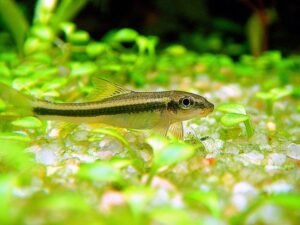

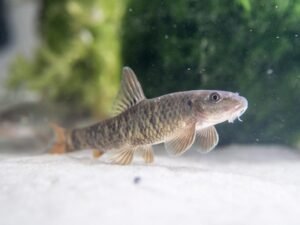


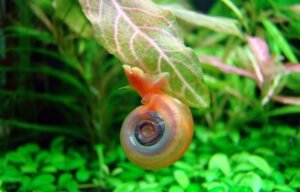

![Ultimate Rubber Lip Pleco Care Guide [Size, Diet, Breeding] Rubber Lip Pleco](https://aquariumhunter.com/wp-content/uploads/2021/09/download-2.jpg)


 Rubber Lip Plecos are an excellent choice for more experienced aquarists; they need well-matured aquariums, water with medium hardness, milder temperatures, and a strong water flow.
Rubber Lip Plecos are an excellent choice for more experienced aquarists; they need well-matured aquariums, water with medium hardness, milder temperatures, and a strong water flow.![The 7 Best Dwarf Cichlids for Your Aquarium [complete guide] The 7 Best Dwarf Cichlids for Your Aquarium [complete guide]](https://aquariumhunter.com/wp-content/uploads/2021/09/download-1.jpg)





